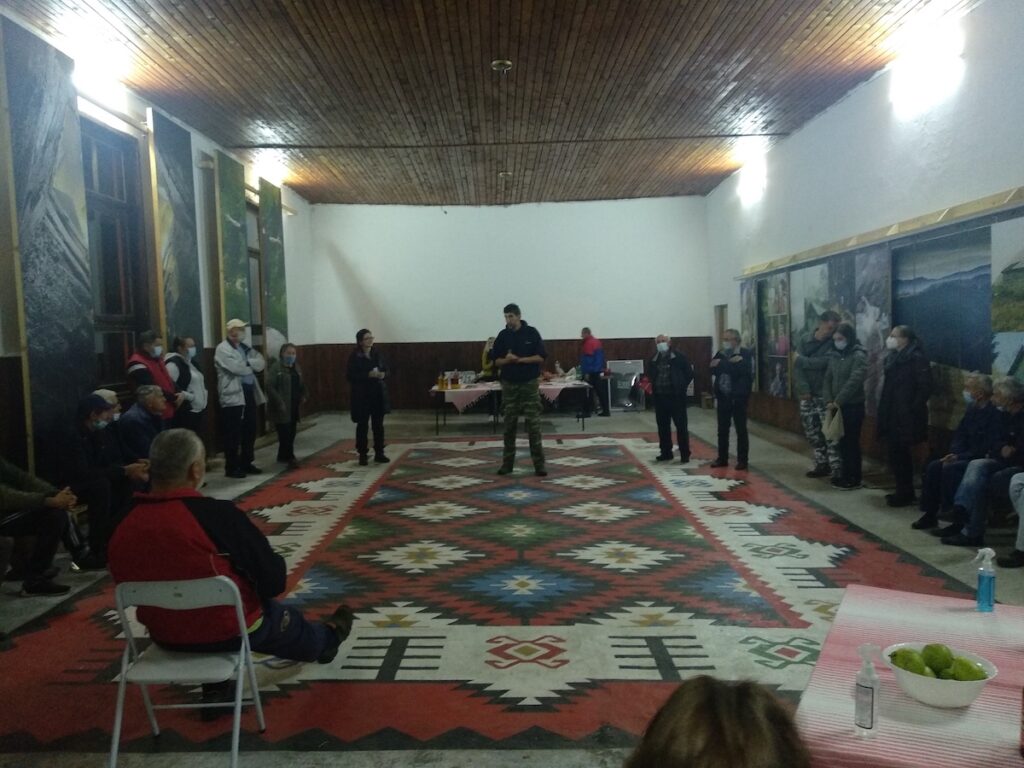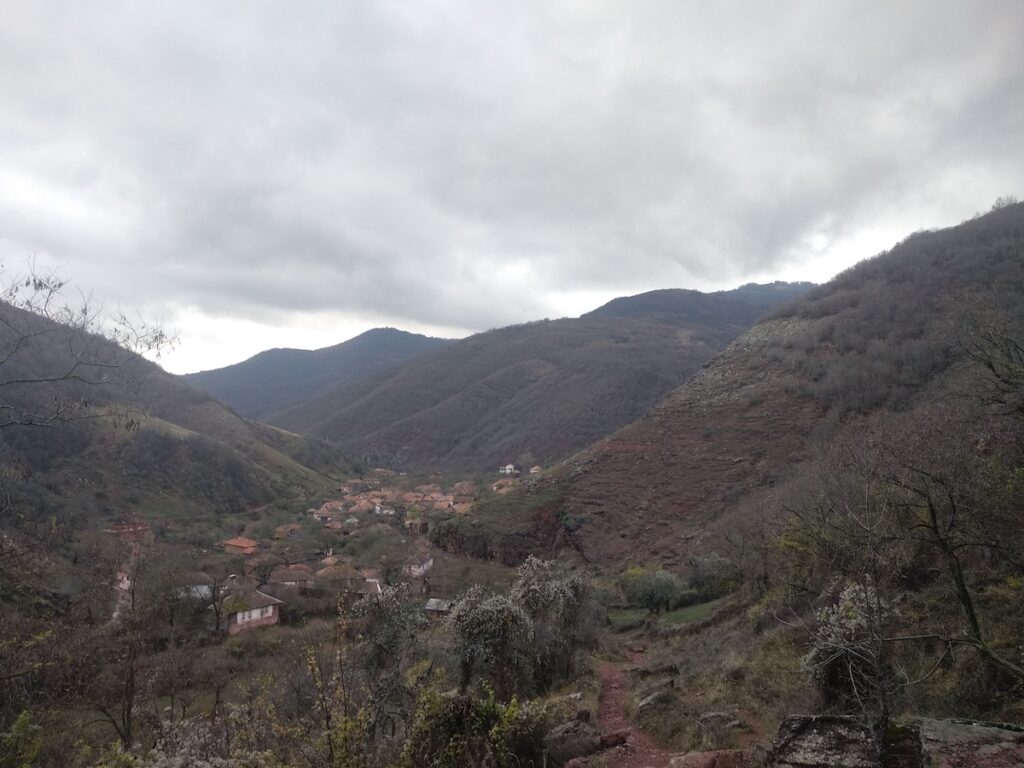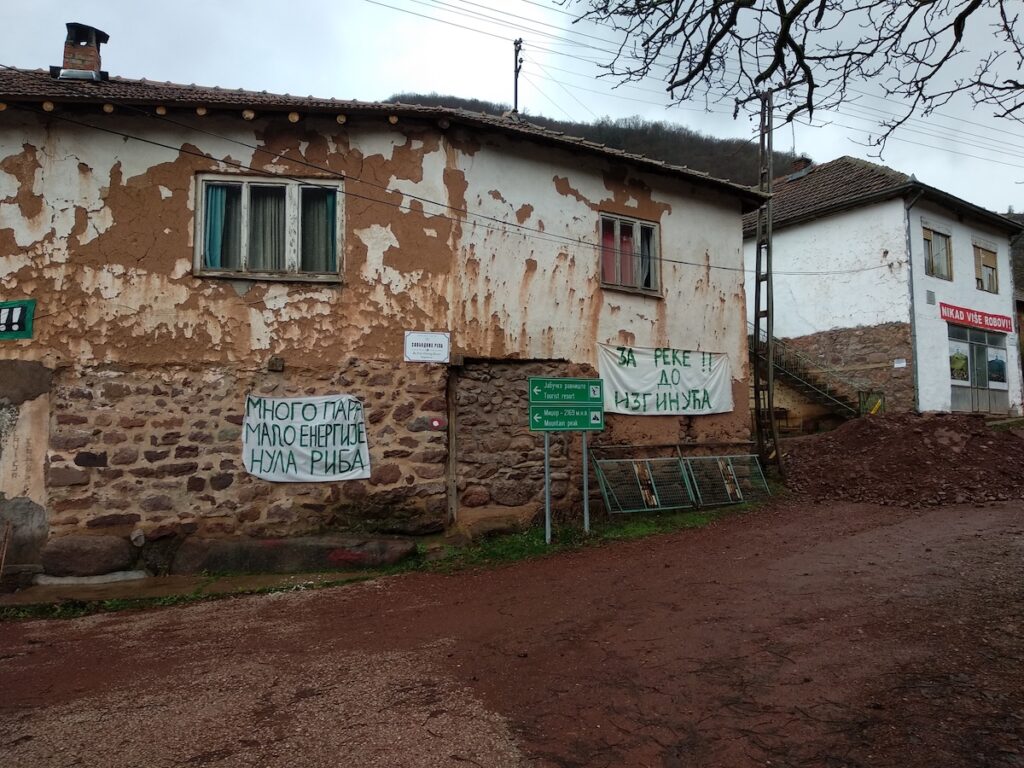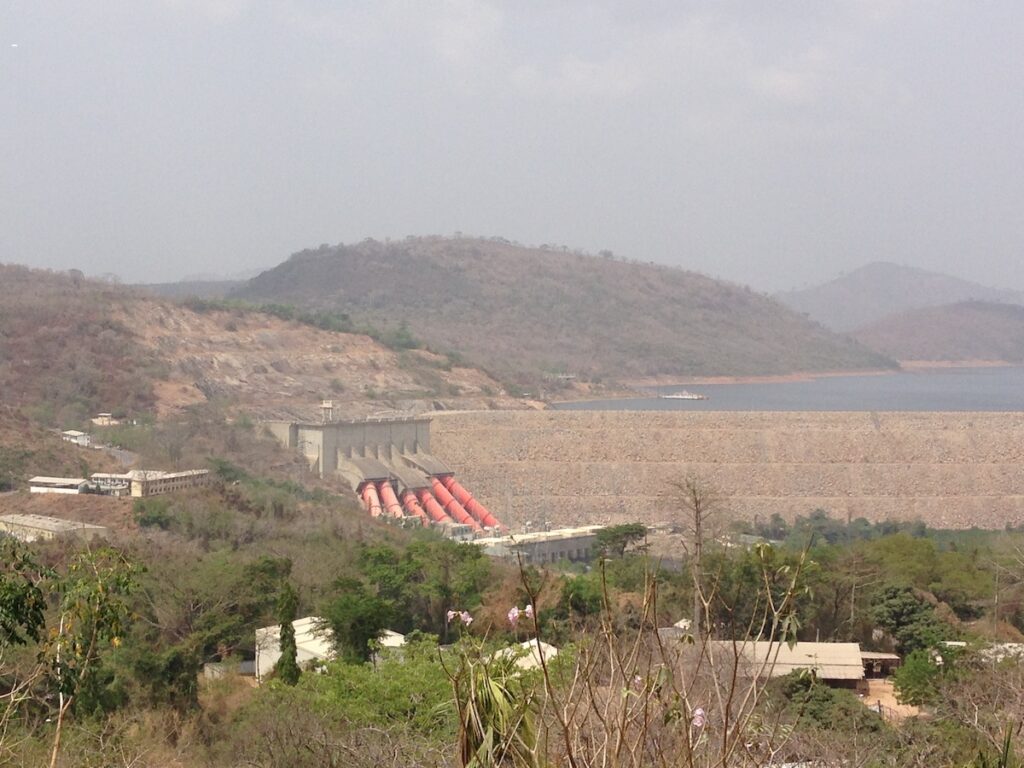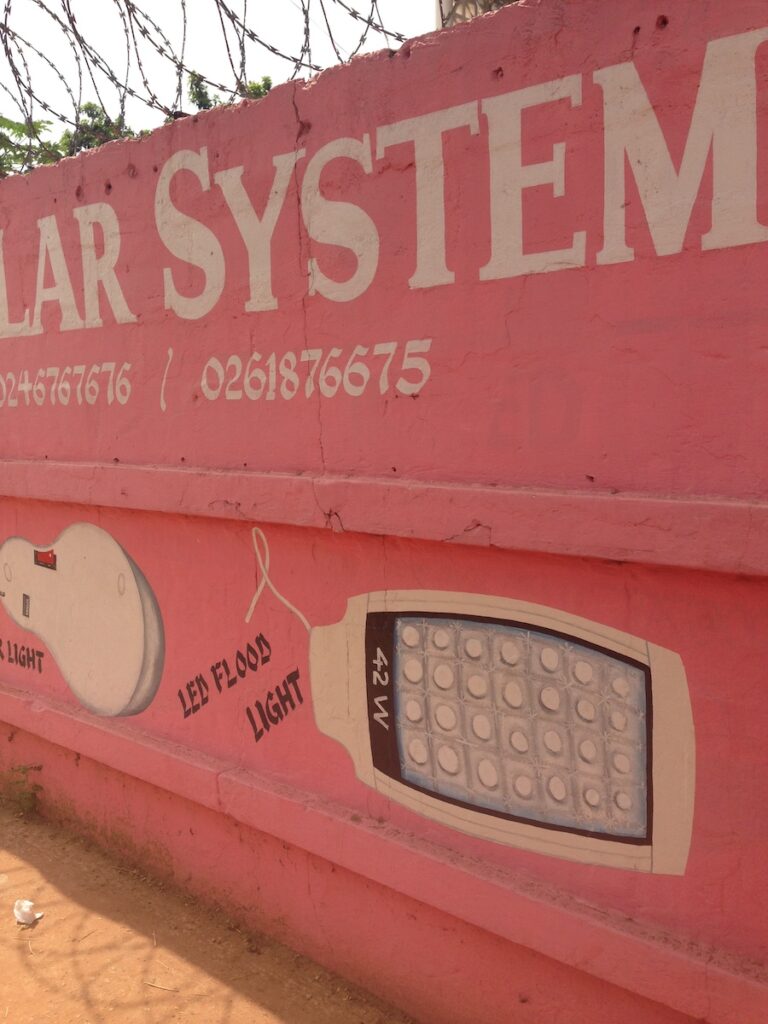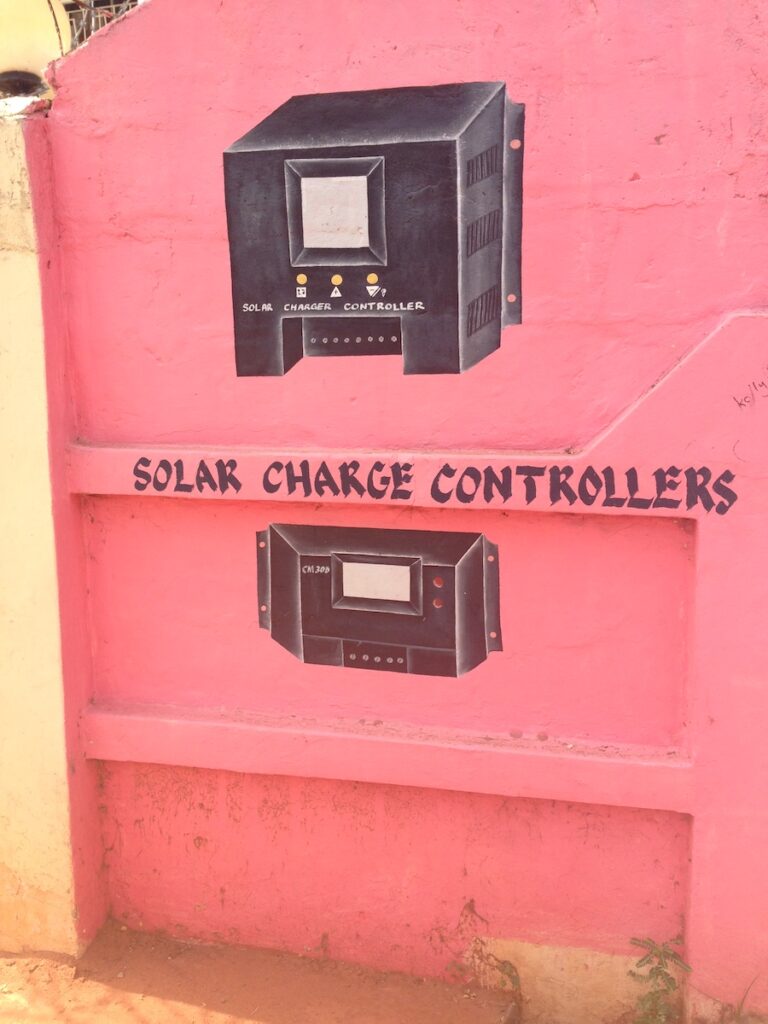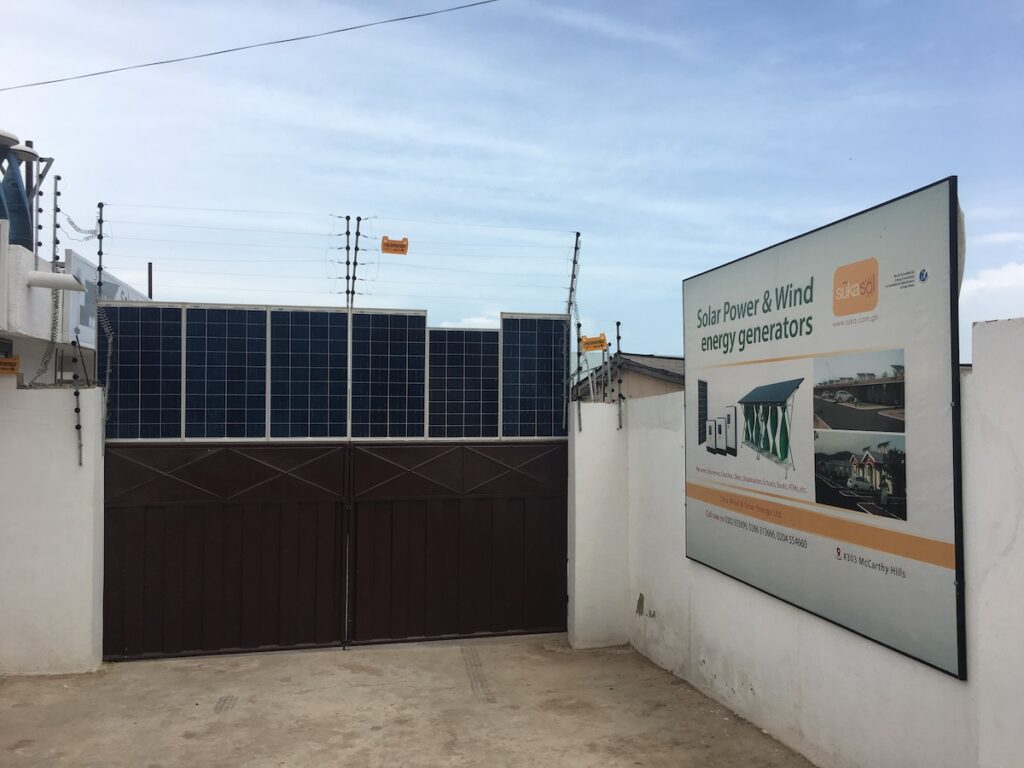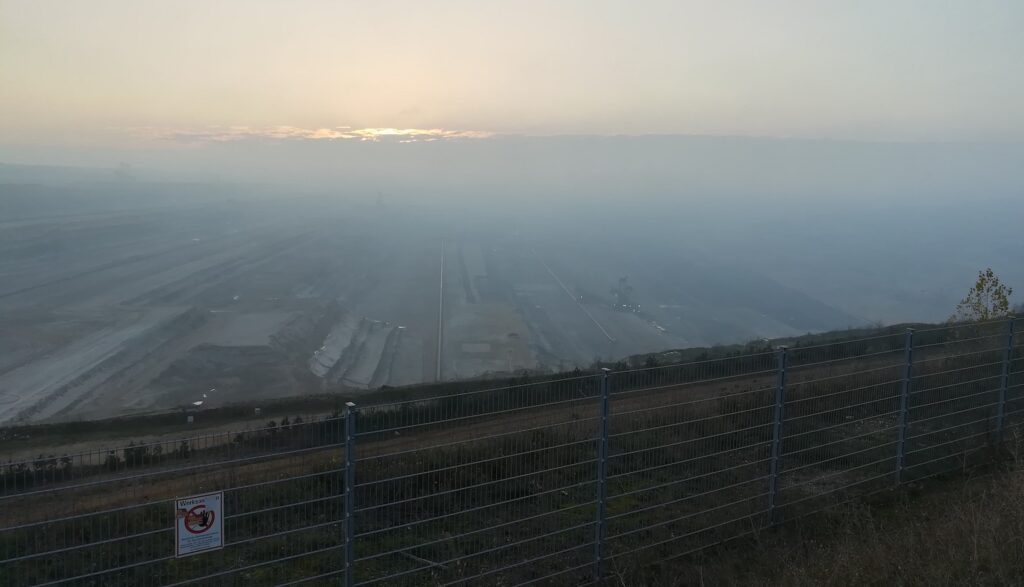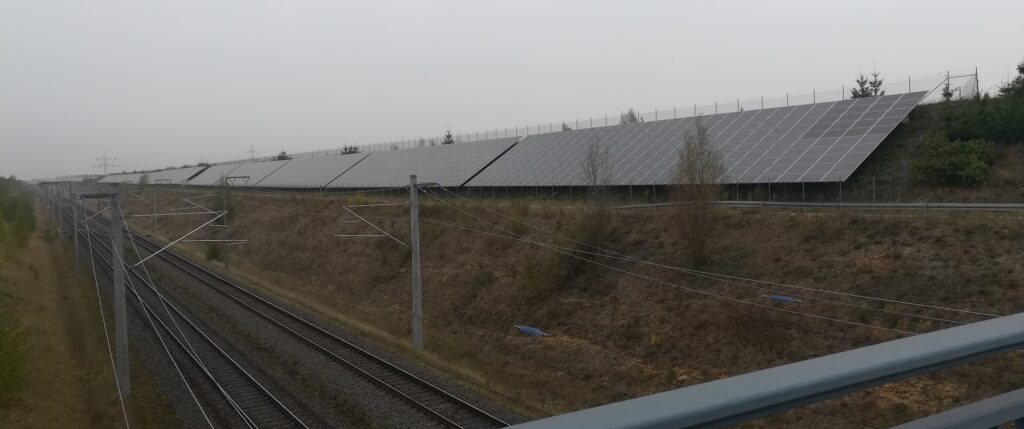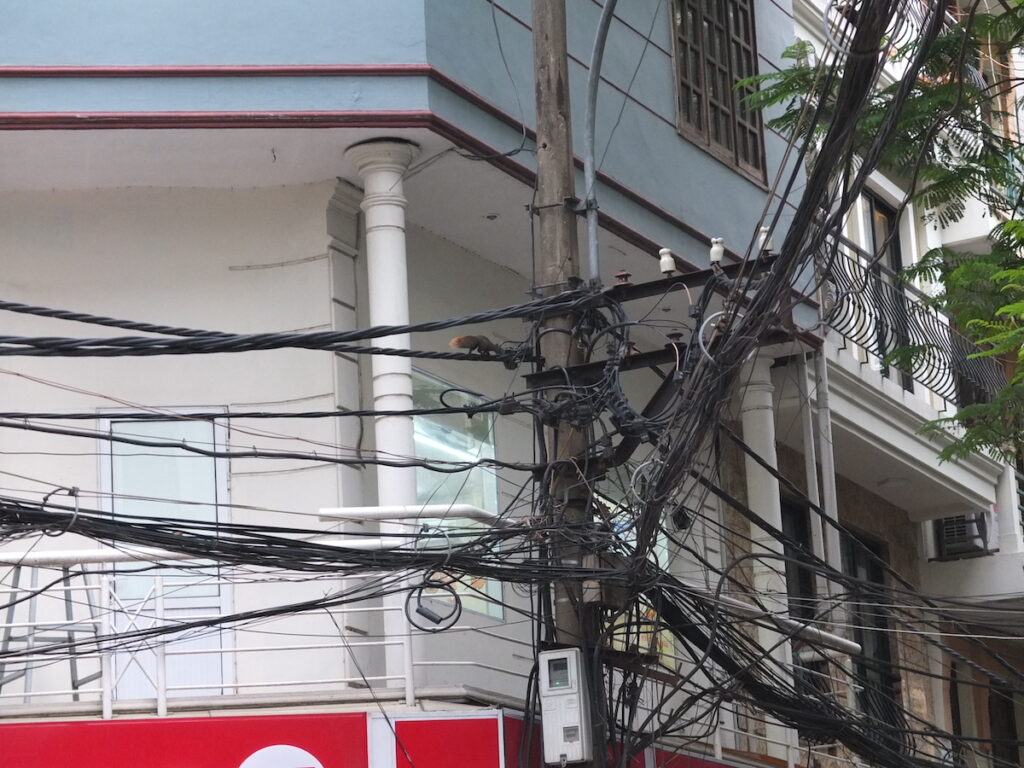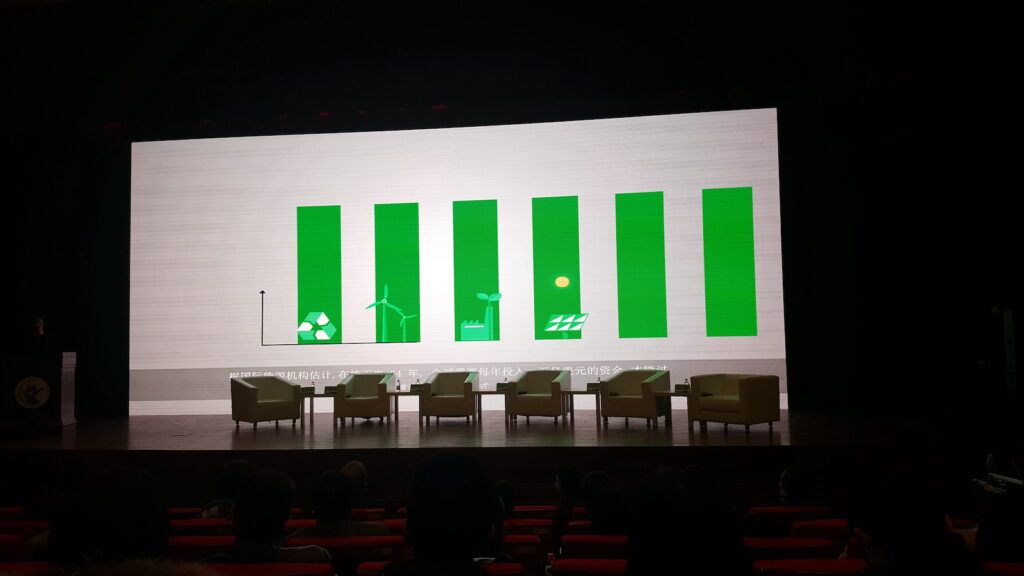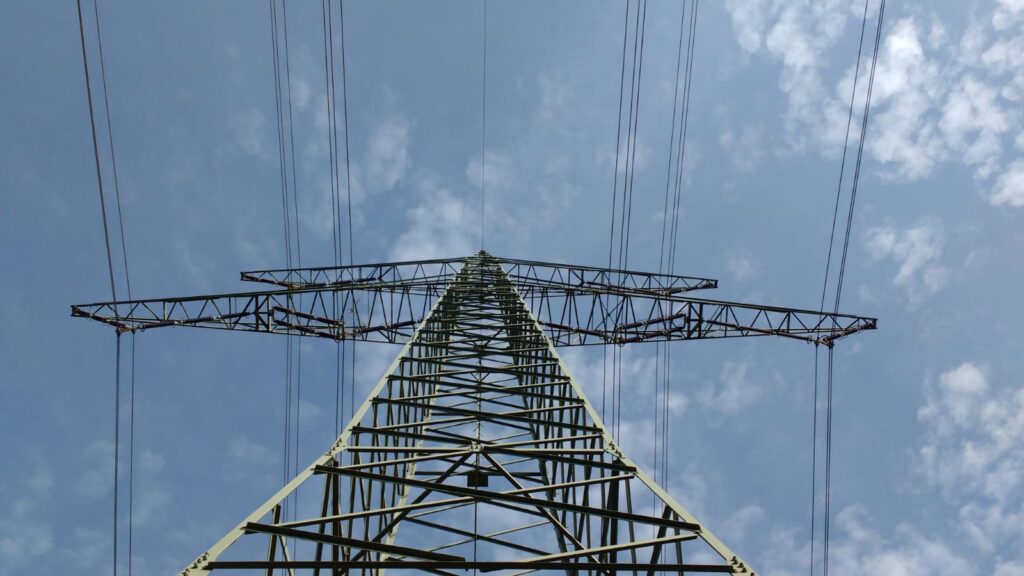This post is part of a feature on “The Political Power of Energy Futures,” moderated and edited by Katja Müller (MLU Halle-Wittenberg), Charlotte Bruckermann (University of Bergen), and Kirsten W. Endres (MPI Halle).
In a little restaurant in the midst of a foggy day, Talita served me chicken, rice, salads and a glass of local wine. She said I was the only customer, the only person around. The mountain area in the Viseu region in northern Portugal usually attracts tourists for its special landscape; the granite and slate of the mountain as well as the lush flora, interlaced with moss and lichens. But with the lockdown during the COVID-19 crisis people stopped coming. There are not many other industries here, the only other ones are the wine and the wind businesses, the latter of which is huge. Talita points to the turbines on display on the top of the cliffs, surrounding us —an infrastructural crown that towers over the valley. “You see, we have so much wind here, it is our secret resource.” Talita explains that wind is the special, often unknown ingredient of Portuguese wine. It plays a role as a natural antibiotic, preserving the integrity of the vineyards without the need for preservatives and it dries out the plants after it rains. “You can feel it in the wine.” I sip from the glass, seeking the taste of the wind. It is not just a sensorial attempt.
I am in Portugal to trace how wind has been harnessed, and how an instrument like a green bond has served as both a financial and an energy source. As part of a larger project which looks at the development and impact of green finance from an anthropological perspective, I followed the first Chinese green bond to be issued in Europe as an ethnographic object of research. This not only sheds light on the way a green bond can be traded across boundaries but also on what its impact is on the ground. Green bonds result from the recent development of green finance, which promises to tackle the current ecological crisis with debt instruments. Similarly to conventional “vanilla” bonds, green bonds are fixed-income debt instruments whose risk is bound to the issuer profile but whose proceeds are earmarked in green infrastructure/projects that the issuer pledges to invest in (Jones et al. 2020).
Green bonds bring cheaper capital for issuers and lower risk returns for investors by offering projects that decarbonize infrastructures and favor energy transition. Green bonds exemplify how the financial and the material are deeply interconnected. As I will show, this is demonstrated by the way the auditing and certification practices that create and “provoke” the value of the bond as a financial asset (Muniesa 2014; Birch and Muniesa 2020) intersects with specific material conjunctures and power hierarchies in which the bond is embedded.
Thus, this analysis explores the way finance capital valorization is increasingly interwoven in the process of assetization of nature, and how this is deeply implicated with the political role of energy infrastructures as both local connective and collective devices. It shows how at the bottom of this new green financial pyramid lies the invisible and infinite potential of wind as energy resource (Franquesa 2018). As green bonds are proclaimed to have an increasingly important role in harmonizing the often-antithetical duality between sustainability and finance, an investigation of how they unpack and are deployed on the ground seems increasingly urgent.
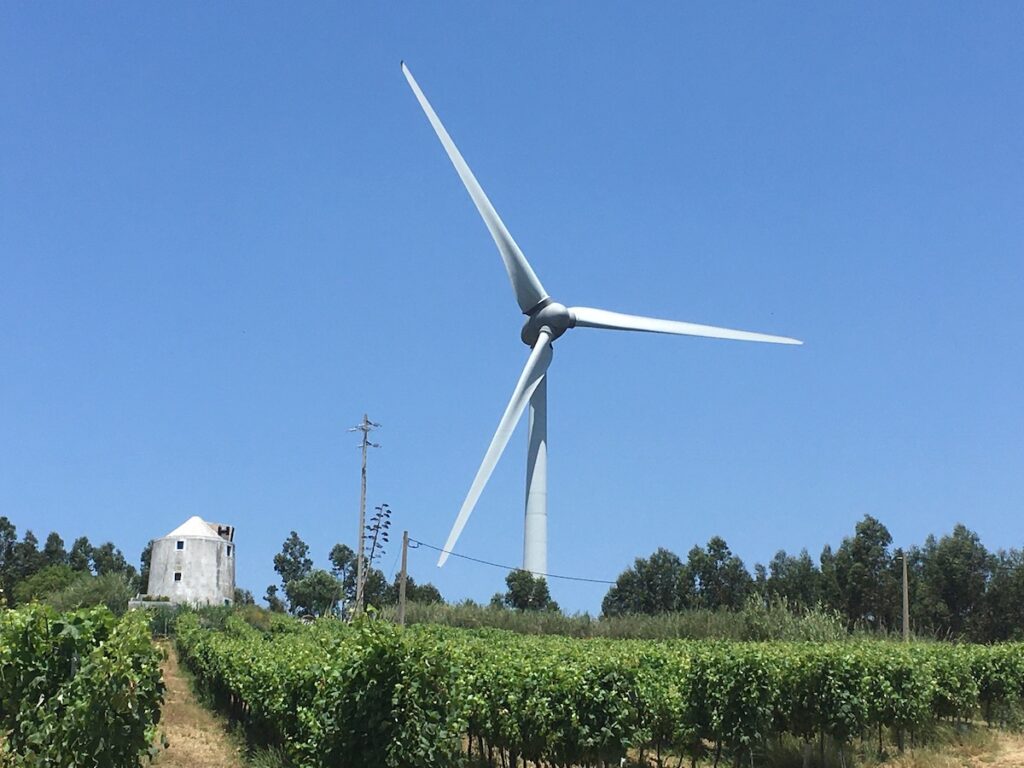
China’s Three Gorges in Portugal
China Three Gorges (CTG) is the state-owned enterprise behind one of the largest dams in the world, the “Three Gorges Dam”; a giant hydroelectric dam celebrated as a triumph of Chinese modern technopower. As the Chinese leader in energy provision, CTG sought ways to penetrate Europe under the encouragement of the Chinese state’s “Go Out” expansion strategy. China not only started to look beyond its borders for sources of energy and natural resources (Mohan and Urban 2019, 248), it also adopted processes of green securitization as a way to boost its position to the world’s most powerful green financial system (Bruckermann 2020) and promoted its ecological civilization (shengtai wenming) outside its borders.
CTG landed in Portugal in 2011 when the country was under the scrutiny imposed by the Troika (the International Monetary Fund, the European Commission and the European Central Bank) for its high government deficit. Among other reforms, Portugal was then compelled to eliminate the country’s growing feed-in tariff debt that compromised Portugal’s path to renewable energy transition. If a few years earlier Portugal adhered to the EU’s 2009 renewable directive, the aim of which was toachieve 60 per cent of its electricity generation from renewable energy sources (Andreas et al. 2019), now it was forced to repay the debt. In the void left by the convoluted austerity measures promoted by the Troika, Chinese state capital intervened, with CTG obtaining a stake in the Portuguese energy sector: 21.35 per cent of shares of the main Portuguese public utility Energias de Portugal (EDP) and 49 per cent of EDP Renewables (a subsidiary of EDP). Effectively, CTG benefited from this forced privatization, and contributed to a new path in Portuguese renewable energy transition, a process that the EU had encouraged but to which it then denied support.
Thus, the CTG became the first Chinese issuer to release a green bond denominated in Euro and certified and listed in Europe. However, despite the layers of compliance with the EU regulations the issuance process does not provide much information about the nature, the location and the impact of the turbines refinanced by the bond. Formally, the documents of the bond—the necessary dispostif for the issuer to certify the truthfulness of its projects and to thus validate the greenness of the bond—do not specify the location of the wind plants, but name only the destination countries of the investment. In the case of this specific bond, the equation of estimated reduced CO2 in wind power in megawatts is the only formula that speaks of the sustainability of the wind farms (Sullivan and Hannis 2017). While it is necessary to quantify the specific number of reduced emissions through wind power, the extent to which this equation effectively abstracts the essence of the turbines is striking, as it de-territorializes CTG’s operations in a prospectus which was consequently validated and certified with no assessment on the location in which these were implemented.
The green bond, however, effectively gave consent to CTG to inherit a government permit on the land the windfarms were built upon, while also benefitting from the previous normative and labor regime that built them (including the EU feed-in-tariff). In other words, it allowed CTG to extract a rent from previously funded infrastructures, with financial capital accruing through the expropriation of a common good in a process of enclosure of natural resources. The municipality of Viseu had its benefits, earning central state funds in exchange for land permits, but these were not extensive. The clausula regulating the funds discounts the price for land rights if the scope is to build for public interest. Furthermore, the windfarms refinanced by CTG were just repowering old infrastructure. This refinancing does not bring much “additionality” at a local level. As many other large wind infrastructures in marginal areas, the ones in Viseu tended to reproduce, if not exacerbate, relations of uneven development between rural and urban areas, as well as public and private investments (Franquesa 2018; Bigger and Millington 2019).
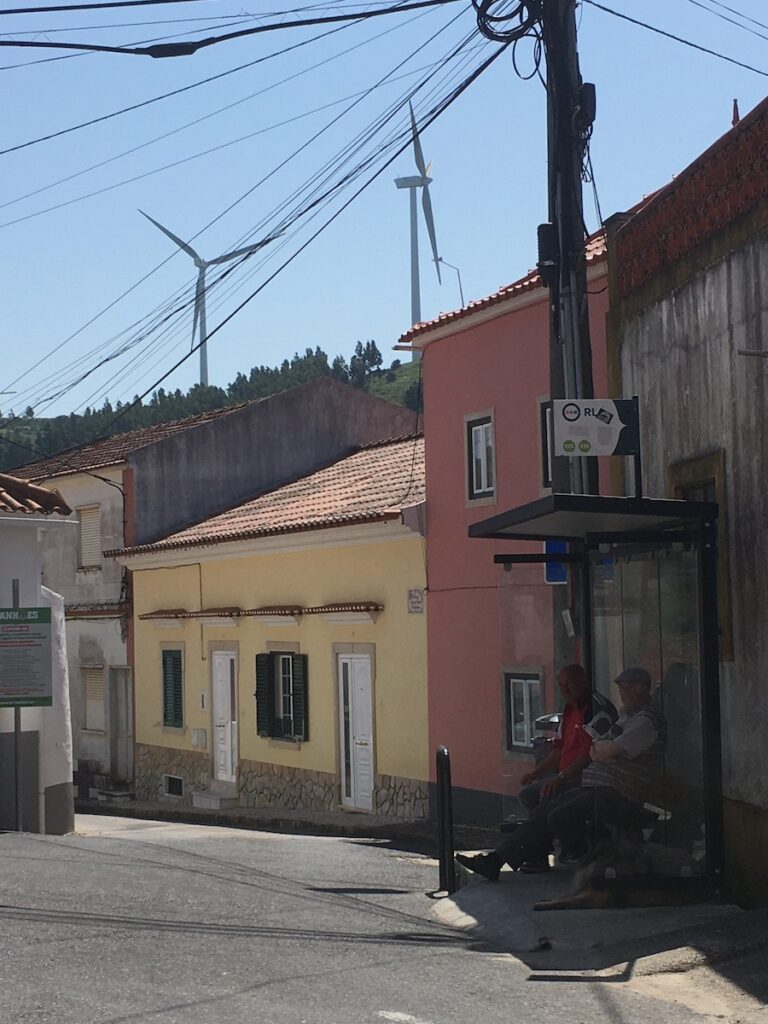
On the Connectivity and Collectivity of Green Infrastructures
Infrastructures are political entities and as such “a vantage point for rethinking politics” (Opitz and Tellmann 2015; Larkin 2013). They determine how the green bond “hits the ground” at a local level. Taking inspiration from Opitz and Tellmann’s (2015) reflections on the politics of connectivity and collectivity of infrastructures, I argue that the technological connectivity of energy infrastructures enables relates to a notion of collectivity, which explains their impact at local and social level. If windfarms are essential in guaranteeing connectivity (as a source of energy provision) with the world, they are at the same time alien to local forms of collectivity. In fact, the specific rationalities of programming infrastructures that the green bonds convey doesn’t have anything to do with the local and political space these infrastructures establish. Often encouraged by austerity measures, green bonds can become “the conduit of large capitals, often originating from afar, which lands in local contexts with little clue on their history and specificity” (transl. Lipari 2020; Scotti 2020). As noted above, in their making, green bonds often do not include any information on where the infrastructures are located, and if and how these will impact collective communities.
Talita shows me her electricity bill. A chart on it shows that most of her energy power comes from wind power. She is happy about this. However, she is also angry and frustrated about struggling to pay her bills; these are way too high. She doesn’t attribute the high cost of her energy bills to the source of energy, which is wind, but to the management and distribution of it. Portugal, and Viseu in particular, is one the EU regions with the highest rate of energy poverty in the EU. Some locals I met told me that they only use wood stoves to keep warm in winter; electricity is too expensive.
People hold contradictory feelings about the wind farms in their area—a mix of indignation and appreciation. The appreciation stems from the fact that now the turbines are considered the banner of Portugal’s success in achieving nearly 80 per cent of renewable energy. Talita tells me she quite likes them as part of the landscape and some tourists see them as an attraction. They signify that Portuguese people care about their land and their country’s path to sustainability. They also reflect a renewed “energy consensus,” which finds roots in the path dependency between democratic power and electricity provision (see Mitchell 2017; Boyer 2019) that in Portugal partially guaranteed political legitimacy from the Carnation revolution onwards. The indignation towards the wind farms instead emerges in the cleavage between the wind blowing on their land and the infrastructure that harnesses it now. While wind was once a resource people had used for generations, benefitting the vineyards and fueling local windmills that still dot the landscapes of Portuguese countryside—and thus directly contributing to the community’s economic benefit—people now see the externally financed and technologically advanced wind turbines next door as something financially distant and out of reach.
Giulia Dal Maso is a postdoctoral researcher at the University of Bologna. She currently works on the topic of impact/green finance. Her earlier research was on financialisation in postsocialist contexts; in China and Eastern Europe. She has published in in Journal of Cultural Economy; Historical Materialism; Social and Cultural Geography; South Atlantic Quarterly, and has a book out on Risky Expertise in Chinese Financialisation: Financial Labor within the Chinese state-finance nexus. This article is based on research contributing to the project ‘The Hau of Finance’, funded by ERC consolidator grant number 772544.
Bibliography
Andreas, Jan-Justus, Charlotte Burns, and Julia Touza. 2019. ‘Portugal under Austerity: From Financial to Renewable Crisis?’ Environmental Research Communications 1 (9): 091005. https://doi.org/10.1088/2515-7620/ab3cb0
Birch, Kean, and Fabian Muniesa.2020. Assetization: Turning Things into Assets in Technoscientific Capitalism. Cambridge, MA: MIT Press.
Bigger, Patrick, and Nate Millington. 2019. “Getting soaked? Climate Crisis, Adaptation Fiance, and Racialized Austerity.” Environment and Planning E: Nature and Space 3, no. 3: 601-623.
Boyer, Dominic. 2019. Energopolitics: Wind and Power in the Anthropocene. Durham: Duke University Press.
Bruckermann, Charlotte. 2020. “Green Infrastructure as Financialized Utopia: Carbon offset forests in China.” In: Chris Hann and Don Kalb (eds) Financialization: Relational Approaches, pp. 86-110. New York; Oxford: Berghahn.
Franquesa, Jaume. 2018. Power struggles: dignity, value, and the renewable energy frontier in Spain. Bloomington: Indiana University Press.
Larkin Brian. 2013. The Politics and Poetics of Infrastructure. Annual Review of Anthropology 42: 327-343.
Lipari, Samadhi. 2020. “L’Impatto Territoriale della Transizione Energetica: un’indagine sulla filiera dell’Eolico nel Mezzogiorno.” Le Parole e le Cose. http://www.leparoleelecose.it/?p=40083
Opitz, Sven, and Ute Tellmann. 2015. “Europe as infrastructure: Networking the operative community.” South Atlantic Quarterly 114, no. 1: 171-190.
Scotti, Ivano. 2020. Vento forte. Eolico e Professioni della Green Economy. Salerno: Orthotes.
Mitchell, Timothy. 2011. Carbon Democracy: Political Power in the Age of Oil. London: Verso Books.
Mohan, Giles, and Frauke Urban. 2019. “China and Global Resources.” In The Palgrave. Handbook of Contemporary International Political Economy, 245–61. Springer.
Muniesa, Fabian. 2014. The Provoked Economy: Economic Reality and the Performative Turn. Routledge.
Jones, Ryan, Tom Baker, Katherine Huet, Laurence Murphy, and Nick Lewis. 2020. “Treating Ecological Deficit with Debt: The Practical and Political Concerns with Green Bonds.” Geoforum 114: 49-58.
Sullivan, Sian, and Mike Hannis. 2017. “Mathematics Maybe, but Not Money.” Accounting, Auditing & Accountability Journal. 10.1108/AAAJ-06-2017-2963.
Cite as: Dal Maso, Giulia. 2021. “The Landing of a Chinese Green Bond in Portugal.” FocaalBlog, 13 April. https://www.focaalblog.com/2021/04/13/giulia-dal-maso-the-landing-of-a-chinese-green-bond-in-portugal/
